It was an exceptionally warm, sunny afternoon, and, highly inspired by nature, I had plenty of uplifting fun exploring the small wonders of nature around me through the macro lens that's becoming one of the things I always carry with me. You know, like the wallet with all the obligatory documents, the house key, the car key, the camera - all the basic stuff that should be surgically incorporated into the body of a contemporary man.
In today's post, as always in this series, I'll show you some small arthropods and plants I photographed in Marlera on one specific October day. This time that day is the 24th of October, and you'll see mostly insects, just a few plants, and only one spider. Before continuing with the macro stuff, I would like to say a few words that explain what the heck is Marlera. It won't be a long explanation, everything is packed into one sentence - Marlera is a coastal area situated a couple of kilometers from the village of Liznjan and about five or six kilometers from where I live.
With that out of the way, let's start the macro mania.
This is the Pieris rapae, a butterfly from the Pieridae family. The butterfly stopped to rest on the Clematis vitalba leaf for a few seconds when this photograph was taken.

Clematis vitalba is a deciduous climbing plant that covers many shrubs and small trees in Marlera.
Here you can take a good look at its fruits. I used the macro lens in this photograph.
In autumn, clusters of fruits form a large quantity of lovely fluff on top of the coastal vegetation.
Each fruit has a long appendage covered with many silky hairs. In the following photograph ...
... you can see a fly from the Muscidae family resting on the leaf of the same plant.
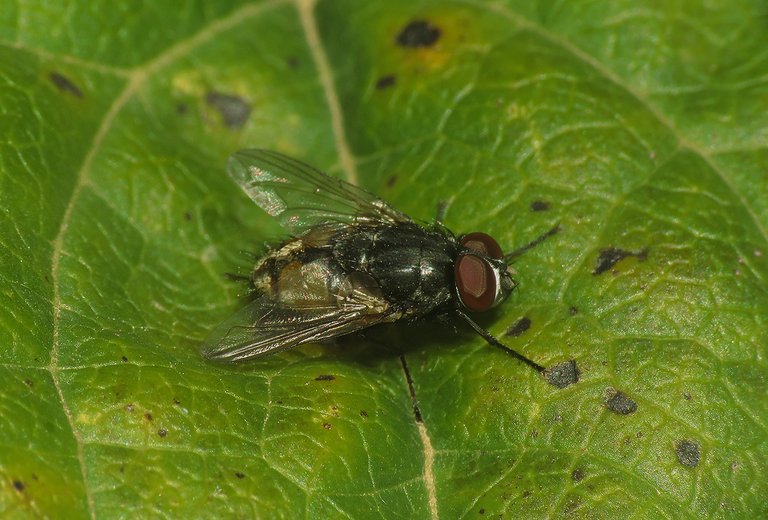
The name of the species is Musca autumnalis. These flies were very annoying on the 24th of October. There are a few common names by which this species is known. One of them is the "face fly". While I was photographing the fly shown in this and the previous shot, about a dozen flies of the same kind were buzzing around my head and tickling my eyes, nose, and mouth.
Adult face flies feed mainly on the tears, sweat, and blood of cattle animals and humans. Regarding the blood, they don't bite but only feed on what comes out of small wounds, often made by bites of other insects, like horse fliers for example.
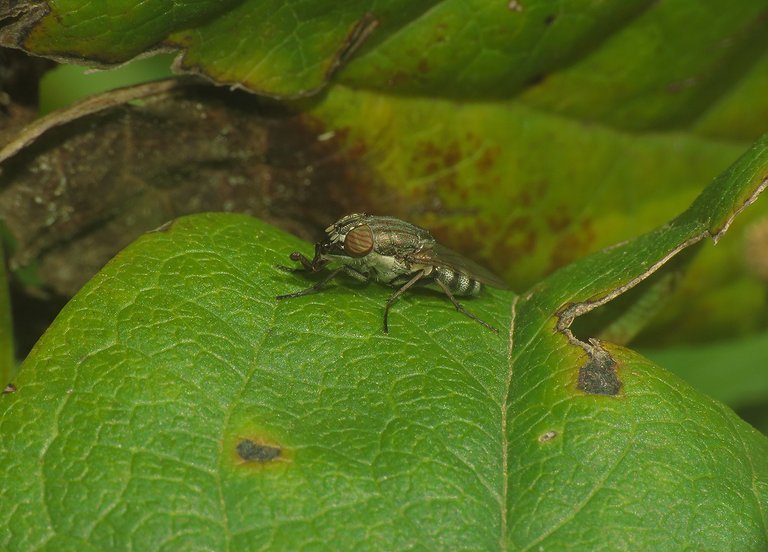
You can see a very different fly resting on the Clematis vitalba leaf in this shot. In one of the following two photographs ...
... the same insect is cleaning its forelegs in a manner similar to what we humans do when we are washing our hands.
The name of the species is Stomorhina lunata. It belongs to the Rhiniidae family.
Here you can see a female.
Only a meter or two from there ...
... among the low, herbaceous vegetation under the shrubs, a male was feeding on nectar provided by the Crepis sancta flower.
In this wide shot, you can see how abundantly can shrubs and small trees be covered with Clematis vitalba.
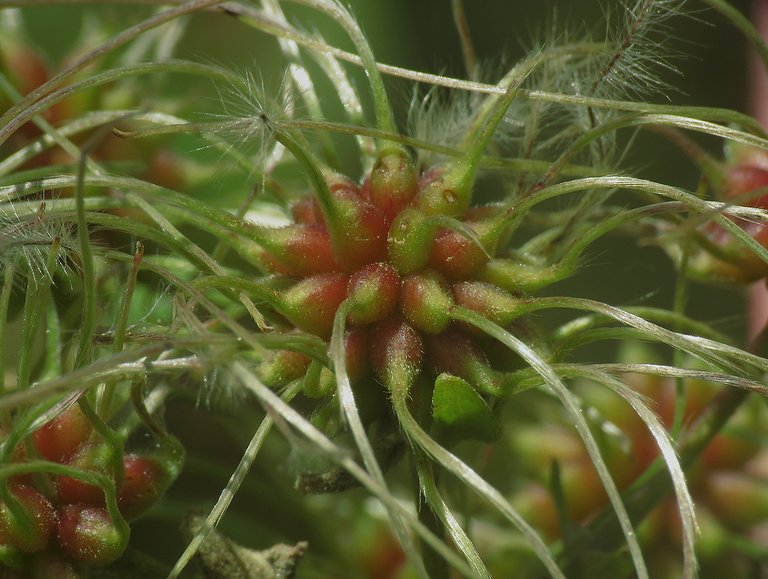
On the 24th of October, most fruits were ripe and in good shape.

I saw only a few clusters made of dry fruits ready to detach and be carried by the wind.
This is the Tylopsis lilifolia ...
... an elegant bushcricket from the Tettigoniidae family. I mean, all bushcrickets belong to that family.
Due to its mimetic shapes and colors, Tylopsis lilifolia was hard to notice on the Dittrichia viscosa plant between the wall of shrubs and one of the unpaved roads that lead through Marlera.

On the leaves of the same plant, I also photographed two dry fruits fallen from the nearby Clematis vitalba.
This one looks a bit like some interesting alien creature I never saw before.
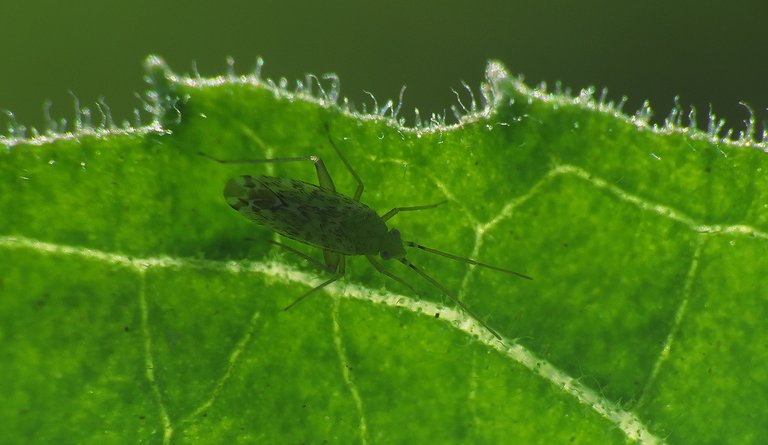
Here you can see the Macrotylus paykulli, a tiny bug from the Miridae family that was hiding on the lower surface of the leaf. This insect was photographed on the same Dittrichia viscosa plant. The spider, shown in the following shot ...
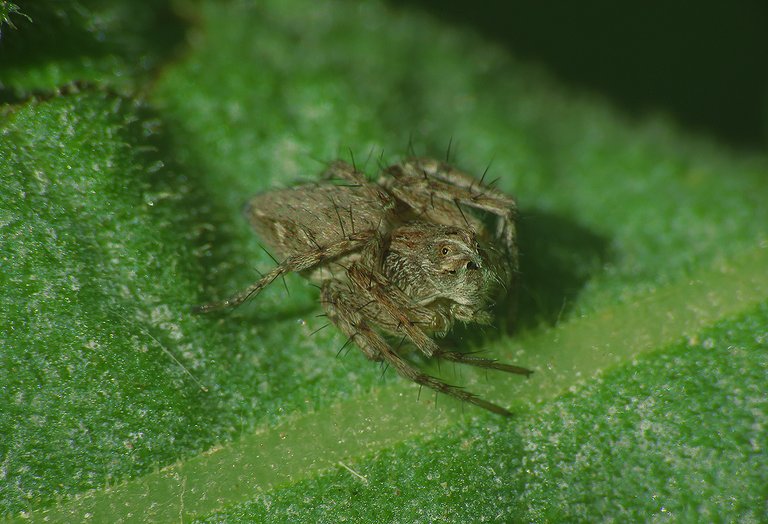
... was resting on the upper surface of one of the leaves a bit lower on the plant.
The name of the species is Oxyopes heterophthalmus. It belongs to the Oxyopidae family.
I photographed one more bug on Dittrichia viscosa. The family is certainly Rhopalidae but I'm not sure about the name of the species. It could be the Stictopleurus abutilon. Maybe. Before leaving Dittrichia viscosa ...
... I would like to show you two more portraits of the Tylopsis lilifolia bushcricket that was posing on that plant. In the photograph on the left, I used the flash, while the one on the right was taken in ambient light.
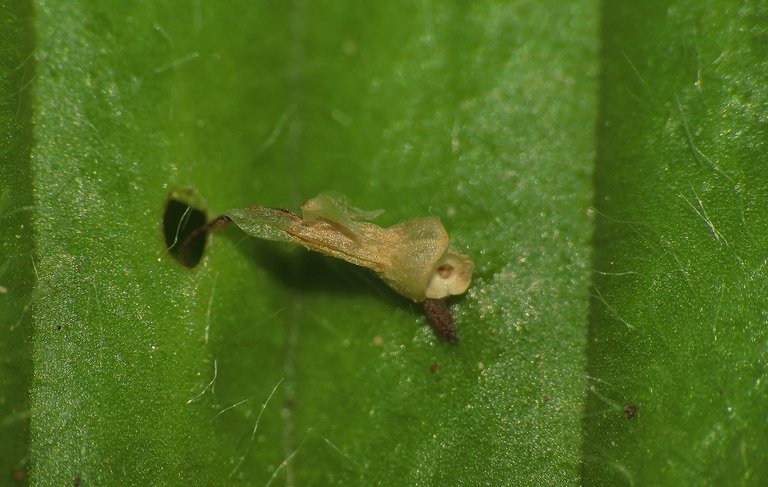
The little thing shown in this shot was attached to the leaf of the Plantago lanceolata. I don't know what is this exactly. I mean, it's a plant part, not an animal, that's for sure. It looks like some tiny flower that has fallen from one of the neighboring plants.
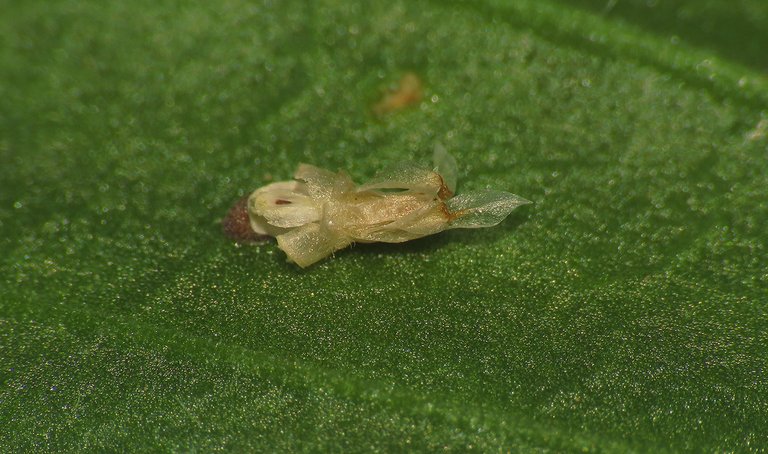
You can see another one here.
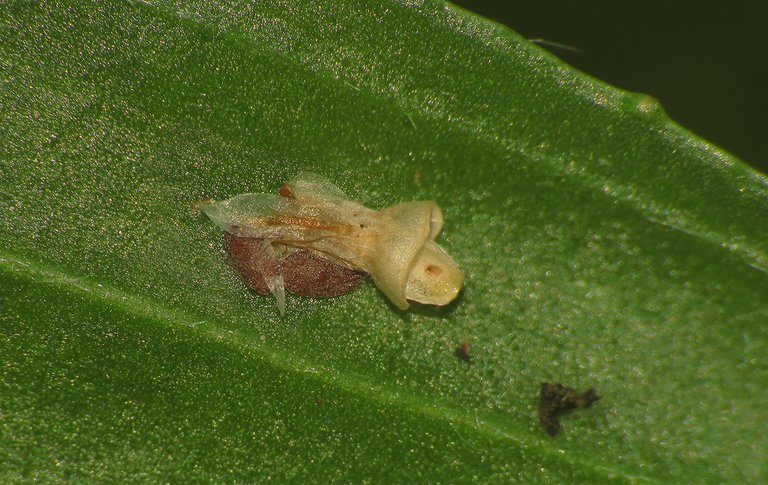
This is the third and the last one you'll see in today's post.
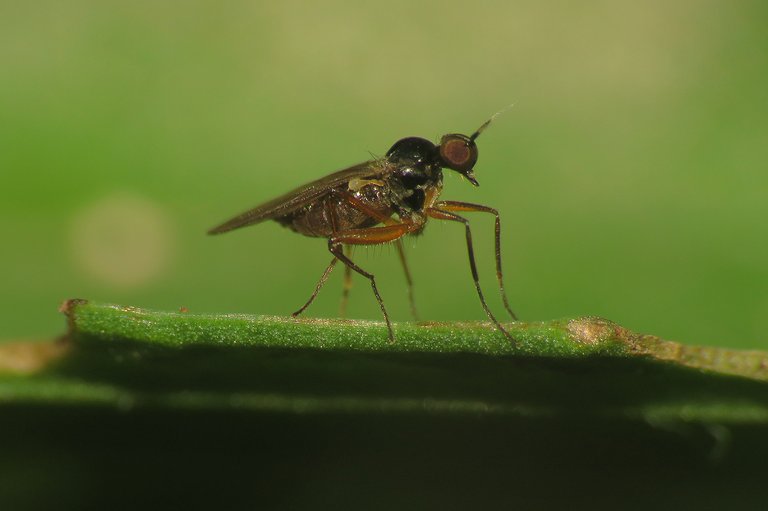
This tiny fly was photographed on the same plant. Can't tell you the name of the species, but I'm pretty sure that it's a little predator from the genus Platypalpus of the Hybotidae family. I never saw this fly before.

Here you can see a Theba pisana snail that was resting, sealed in its lovely spiral shell, on the upper surface of the Clematis vitalba leaf. In the following photograph ...
... you can take a look at the foliage of another climbing plant - the Vitis sylvestris. On one of its leaves ...
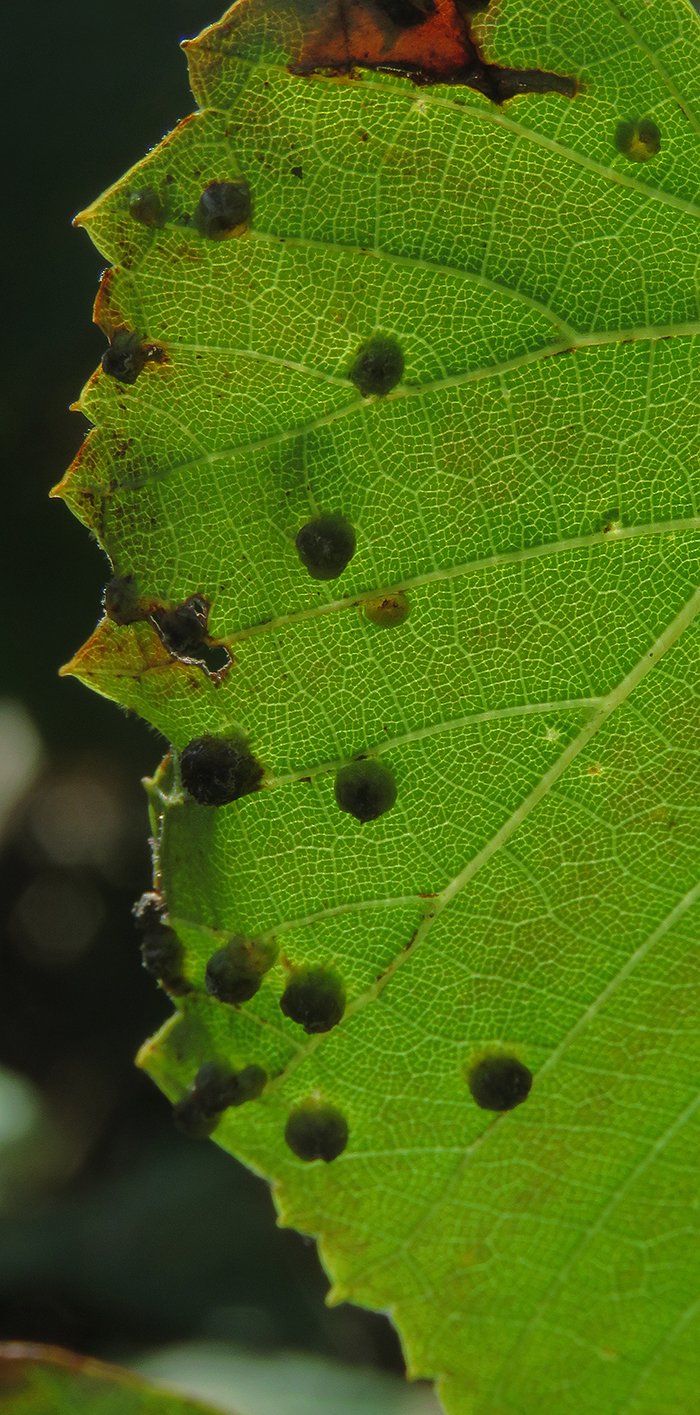
... I photographed these small protuberances ...
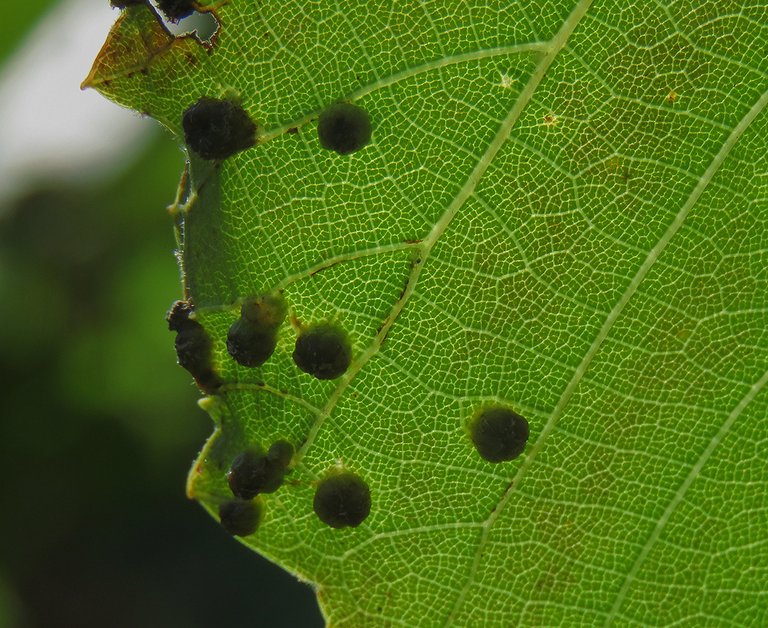
... that look like a symptom of some plant disease.
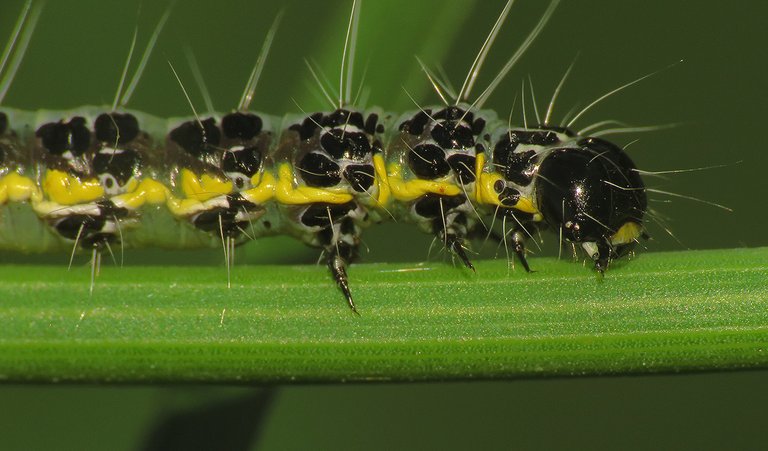
This lovely caterpillar ...
... it's the larval stage of a moth from the Crambidae family.
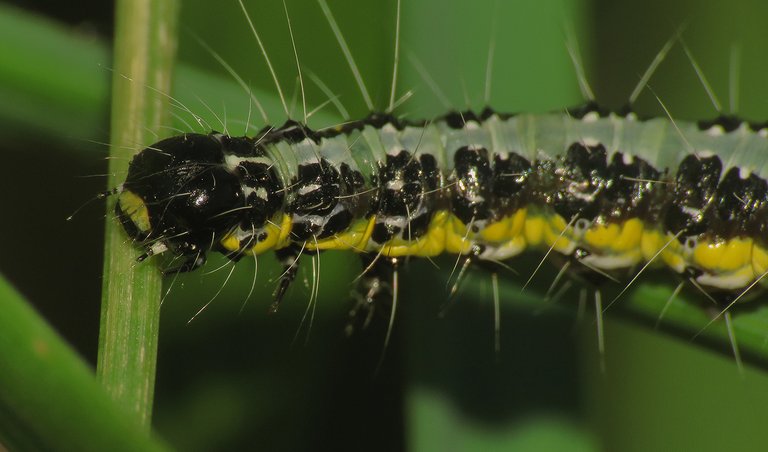
The name of the species is Uresiphita gilvata.
Tall Spartium junceum shrubs can be found all across Marlera but on the 24th of October this year, I photographed only this group of green shoots ...
... that were growing on the dry, cut branch lying by the side of the road, becouse only there ...
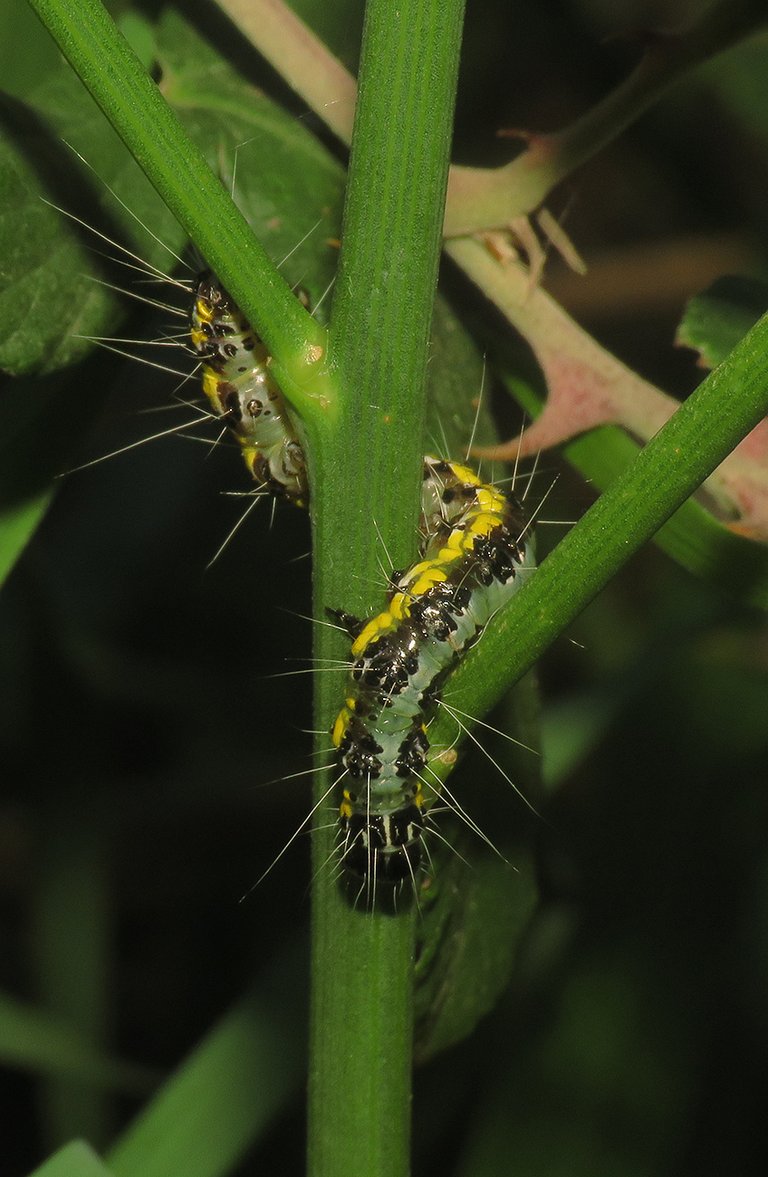
... I found a bunch of Uresiphita gilvata caterpillars.

I took many caterpillar portraits on that occasion.
Here you can see one of those caterpillars chewing the tissue of the plant.
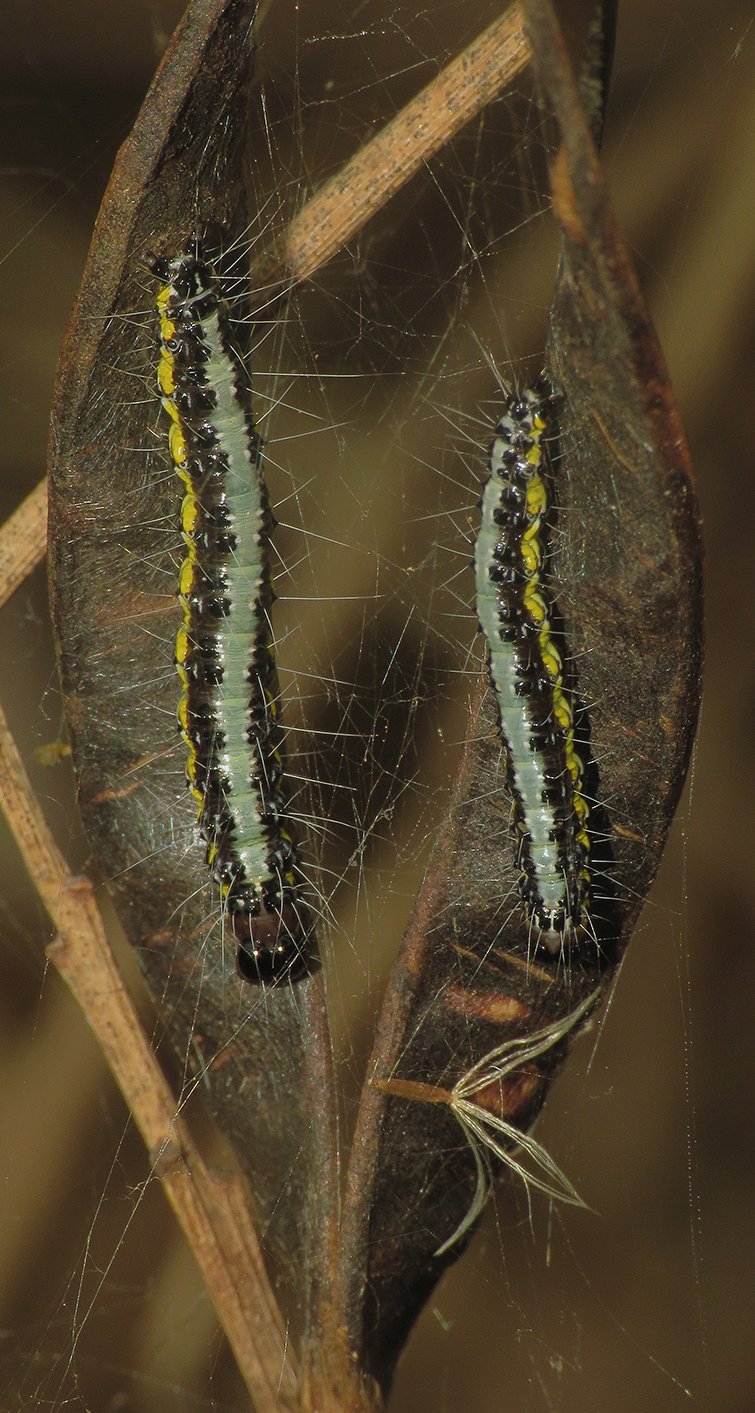
These two were resting, each one on one of the two halves of an open seed pod.
The light was relatively low in the shade, so I first took a photograph with the flash of my camera on. The silky threads produced by the larvae are also clearly visible in this shot.
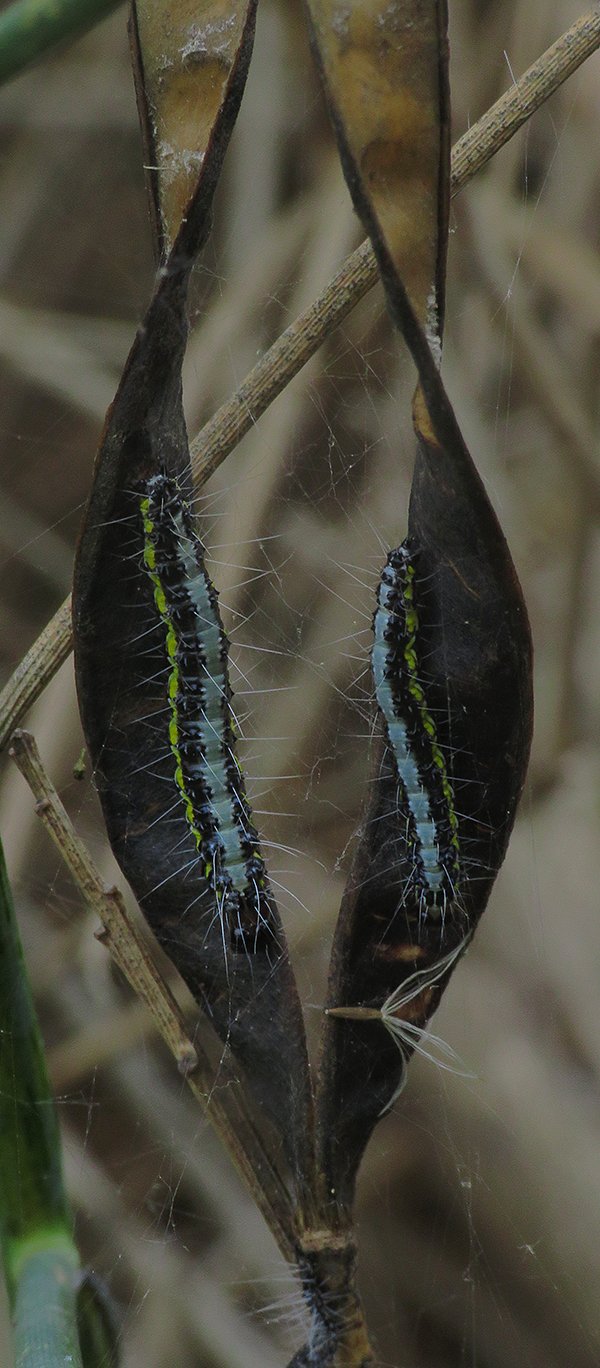
The colors of the caterpillars looked considerably better in ambient light so, after quite a few unsuccessful attempts, I managed to get this fairly good shot that required a longer exposure. I wasn't completely satisfied though.
Here you can see how the scene looked from a lower angle that provided a brighter background. I like this version the best. The blue on the caterpillar's back looks better in the previous shot but the overall atmosphere is better conveyed through this one.

While the other Uresiphita gilvata caterpillars were resting, feeding ...

... or crawling around ...
... one of them was hanging ...
... on a silky thread of its own production.
The caterpillar was slowly climbing the thread and I was following the process through the macro lens. When the following photograph was taken ...
... the resourceful larva has reached the plant at the end of the thread.
Here you can see the same caterpillar resting on the green shoot at the base of a dead Spartium junceum branch.
Among the dry shoots on the upper part of the same branch ...

... I found a bug from the Coreidae family. The name of the species is Coreus marginatus. This insect was well-camouflaged in the brownish environment.
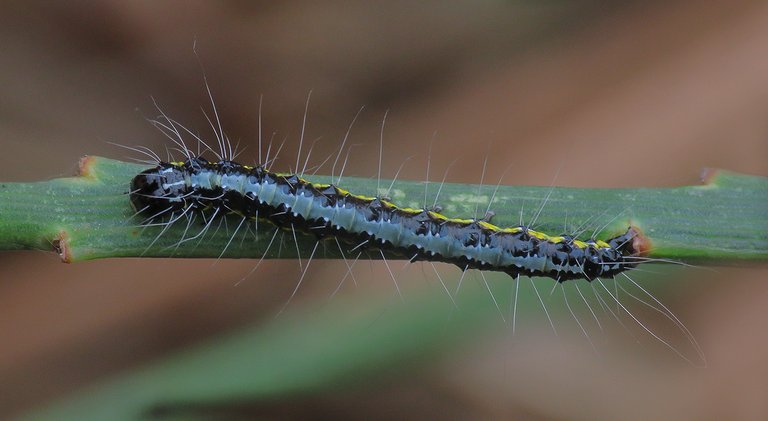
Here you can see yet another Uresiphita gilvata caterpillar. With this one ...
... the post is ready to end.
AS ALWAYS HERE ON HIVE, THE PHOTOGRAPHS IN THIS POST THAT WAS INSPIRED BY NATURE, THE PHOTOGRAPHS ARE MY WORK.
The following links will take you to the sites with more information about some of the protagonists of this post. I found some stuff about them there.
https://en.wikipedia.org/wiki/Pieris_rapae
https://en.wikipedia.org/wiki/Clematis_vitalba
https://en.wikipedia.org/wiki/Musca_autumnalis
https://en.wikipedia.org/wiki/Stomorhina_lunata
https://en.wikipedia.org/wiki/Tylopsis_lilifolia
https://www.britishbugs.org.uk/heteroptera/Miridae/Macrotylus_paykulli.html
https://en.wikipedia.org/wiki/Oxyopes_heterophthalmus
https://www.britishbugs.org.uk/heteroptera/Rhopalidae/s_abutilon.html
https://en.wikipedia.org/wiki/Platypalpus
https://www.jkip.kit.edu/garten/english/853.php
https://en.wikipedia.org/wiki/Uresiphita_gilvata


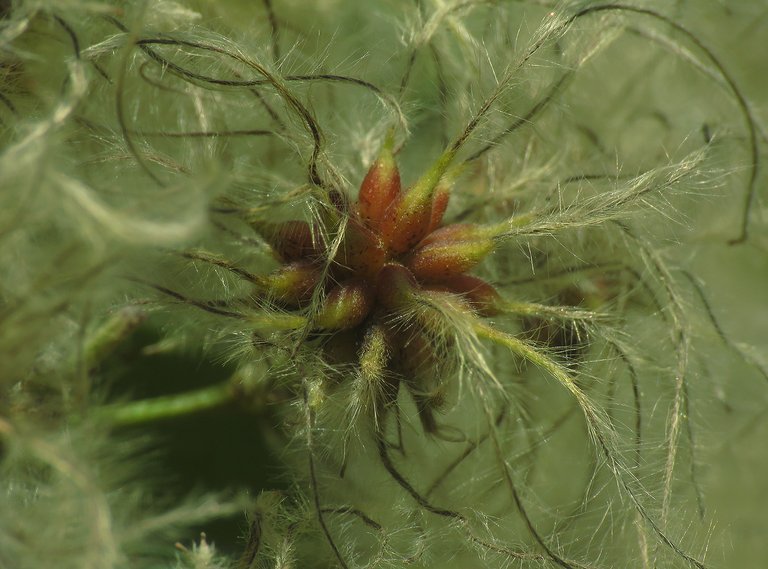
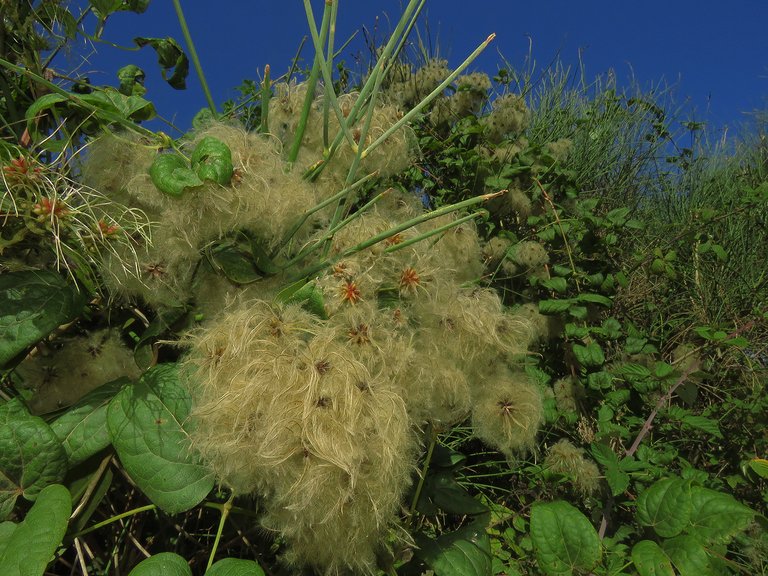


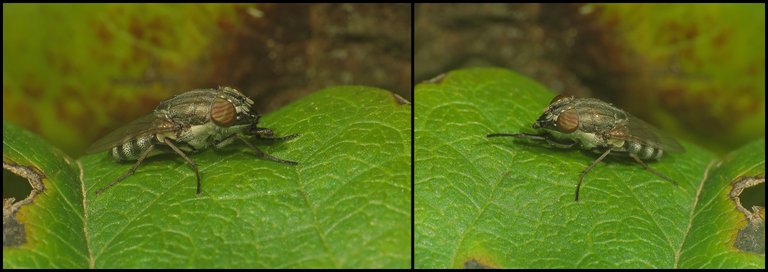
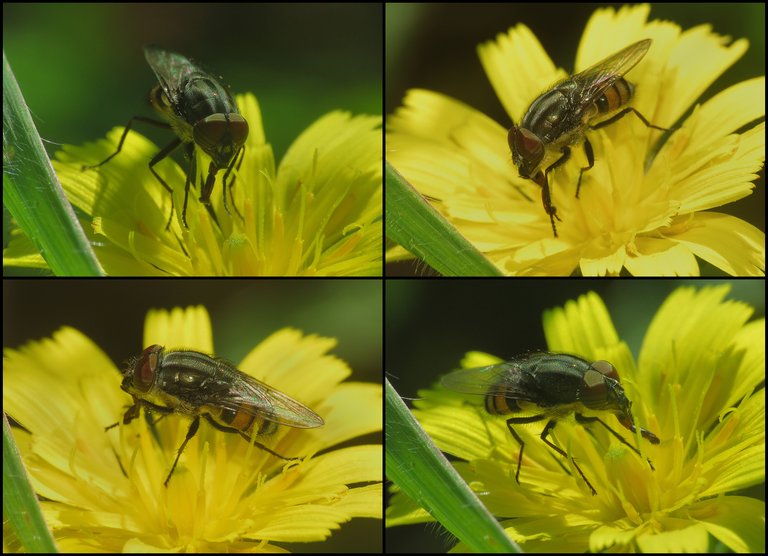
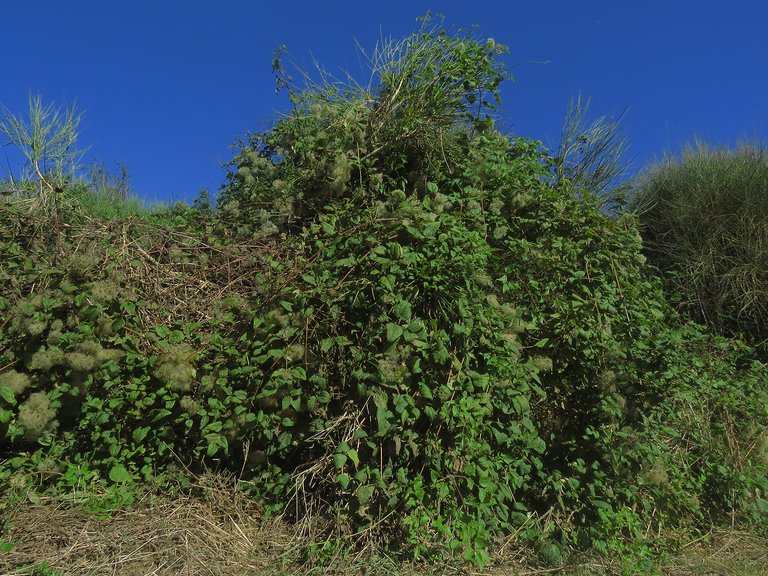
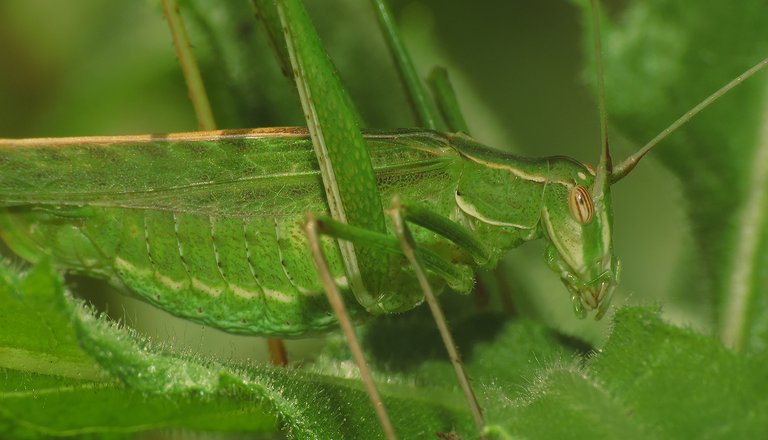

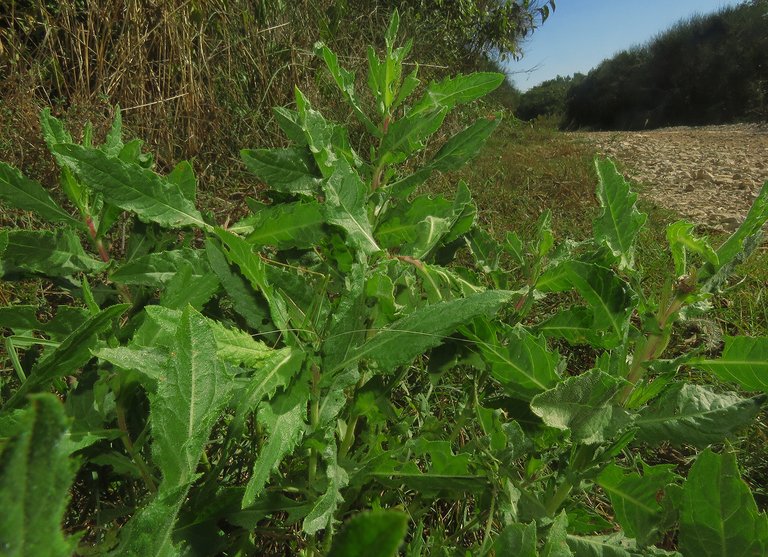
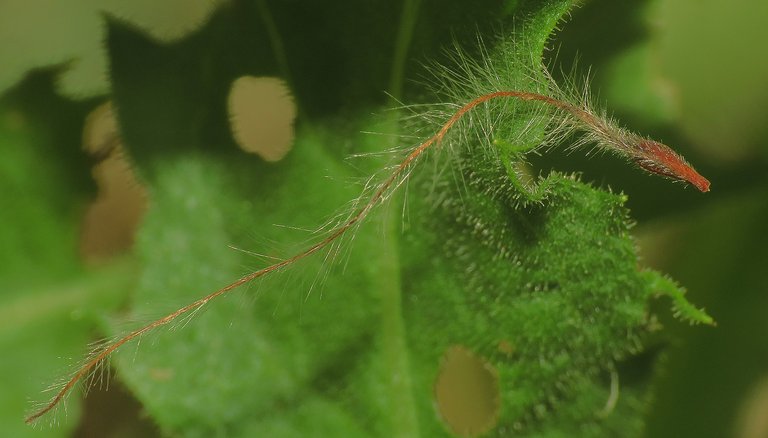
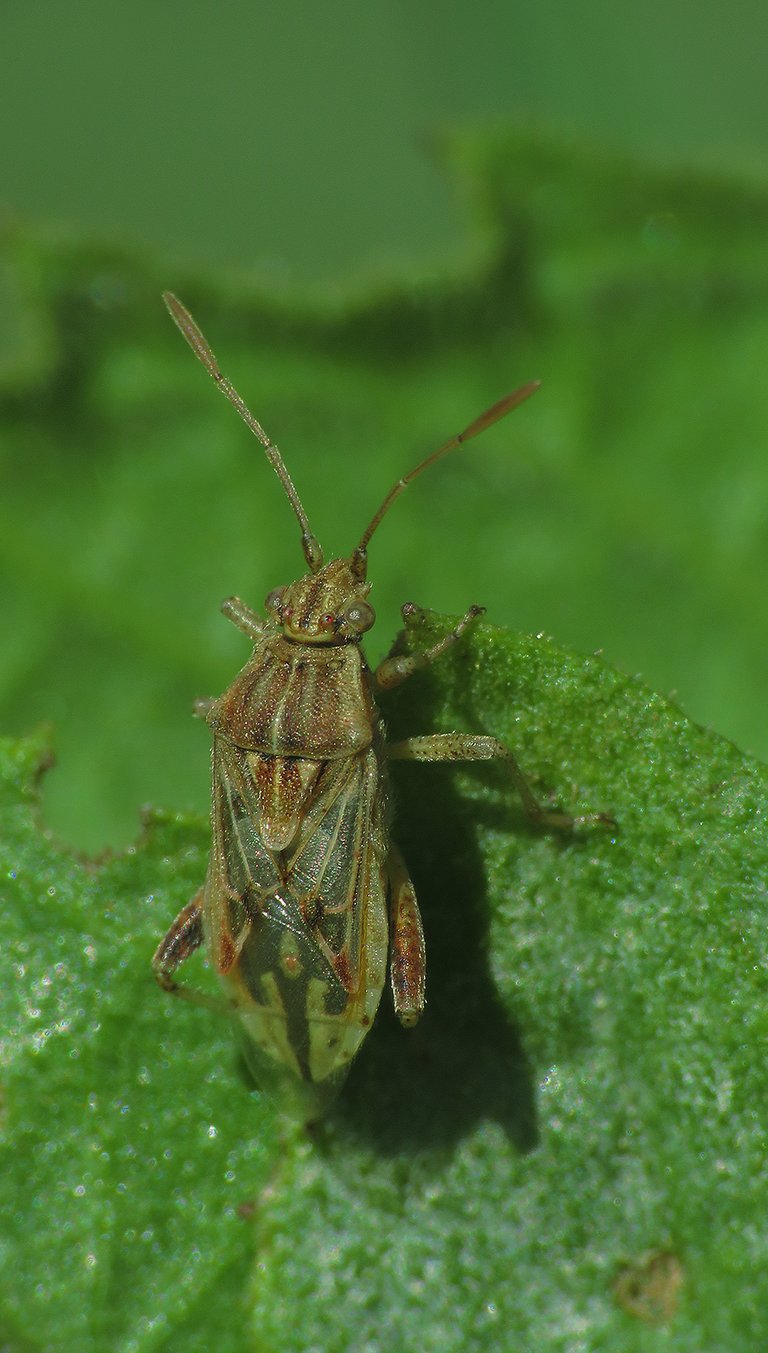
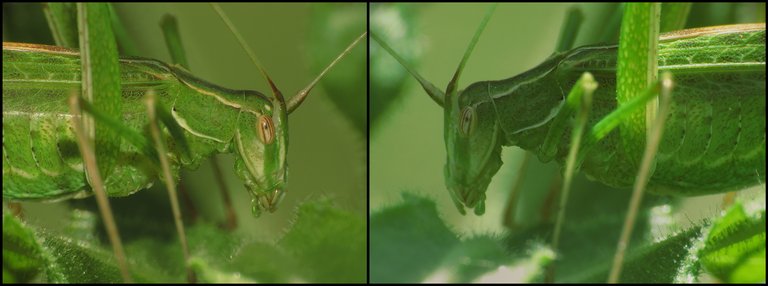


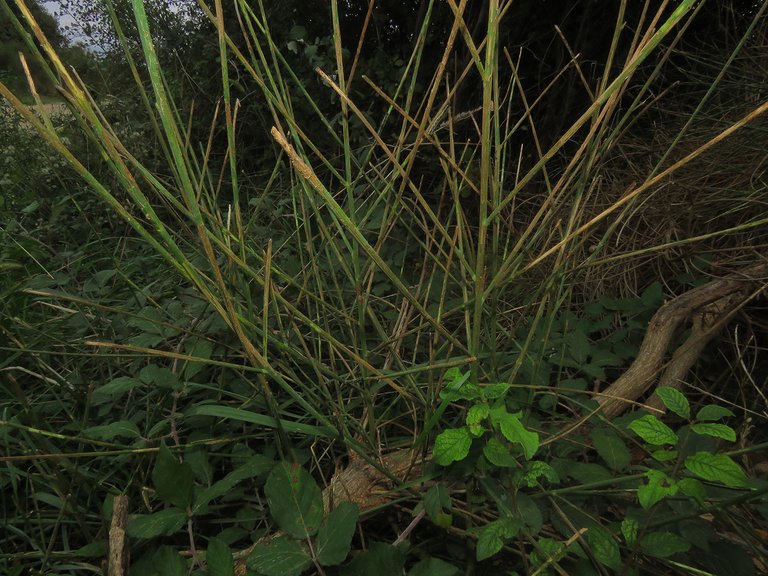
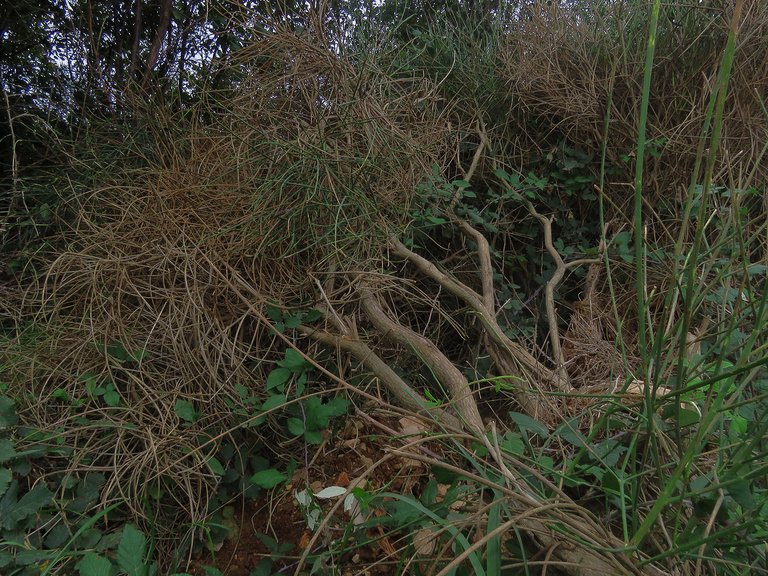
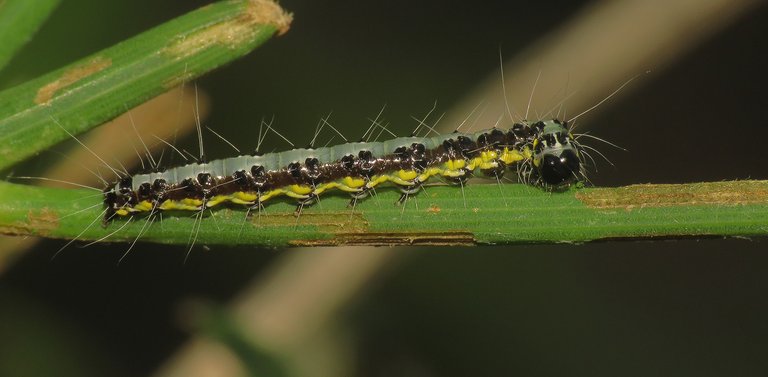
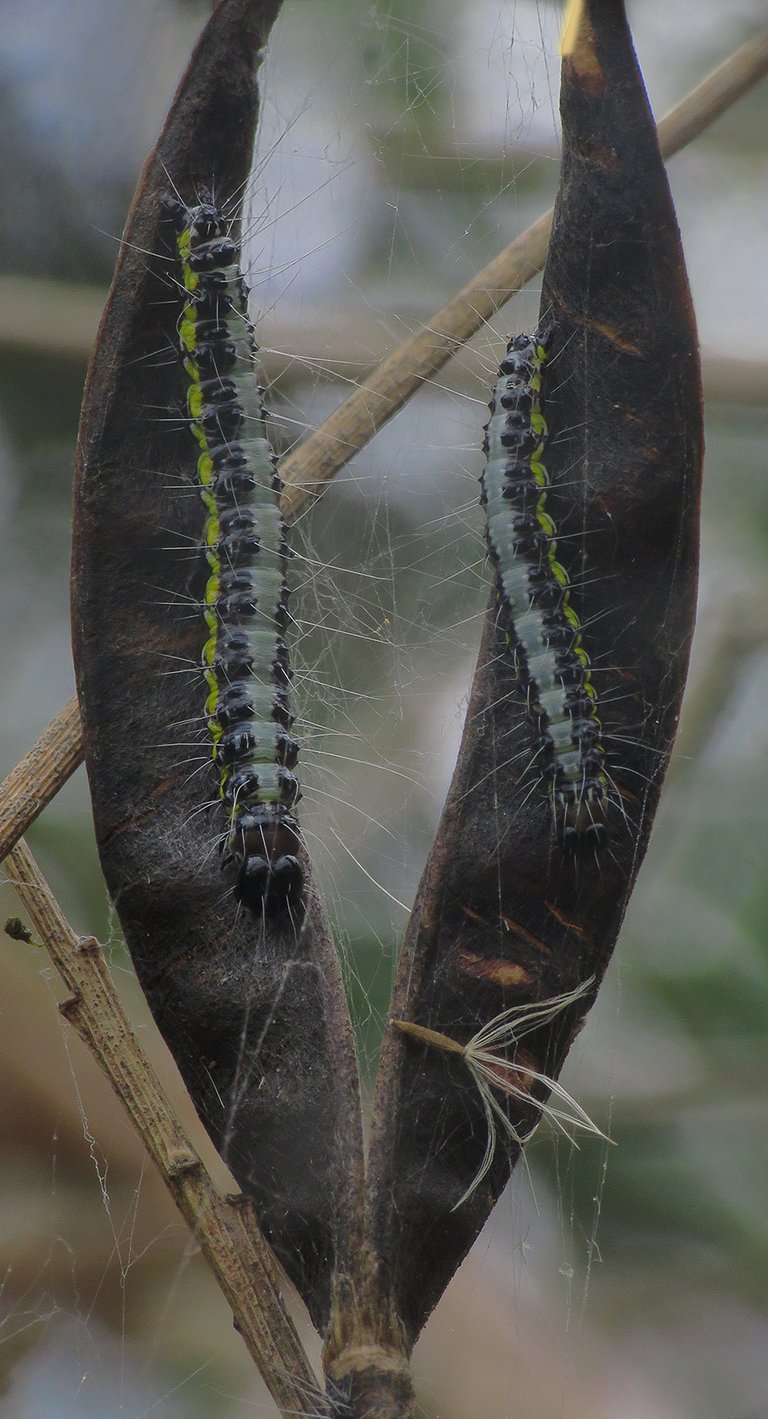



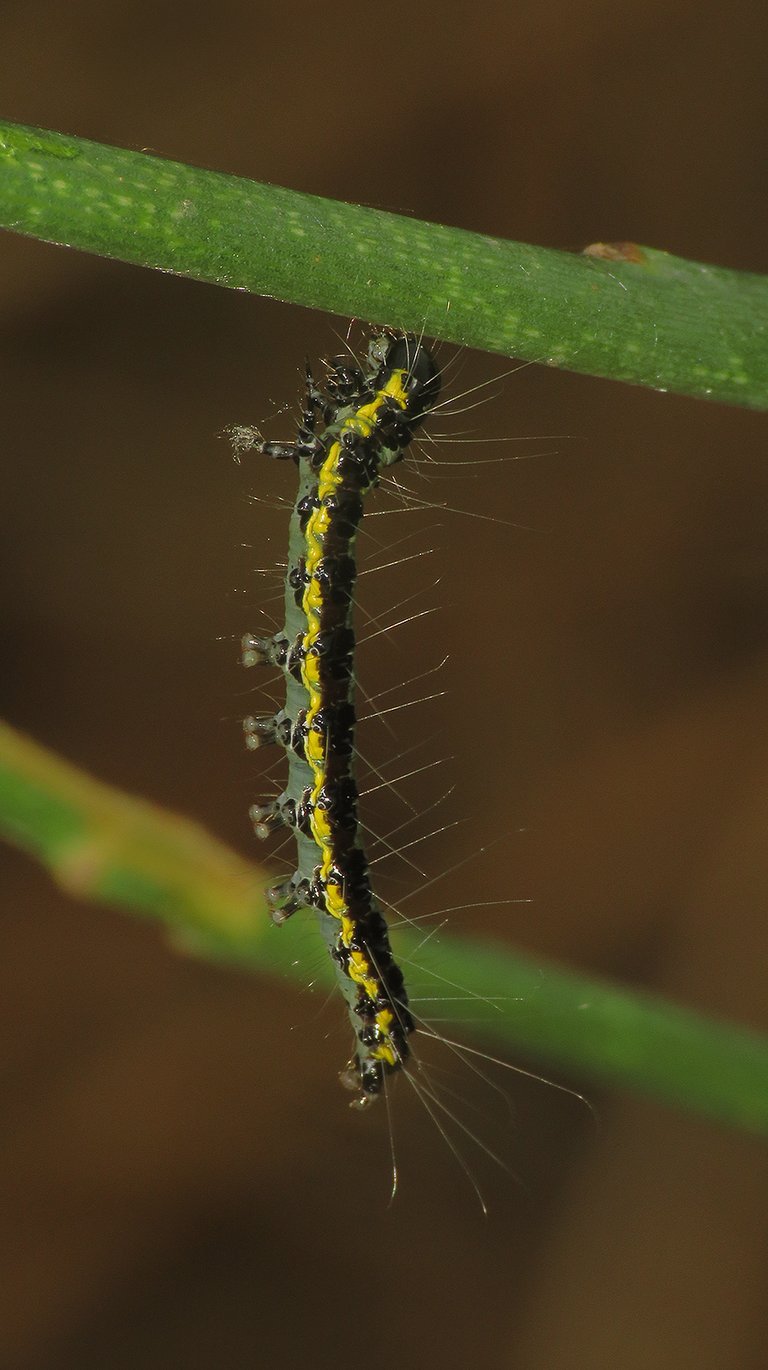
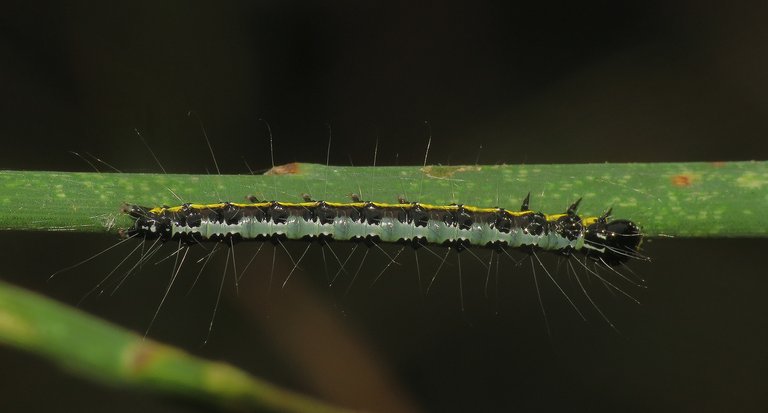
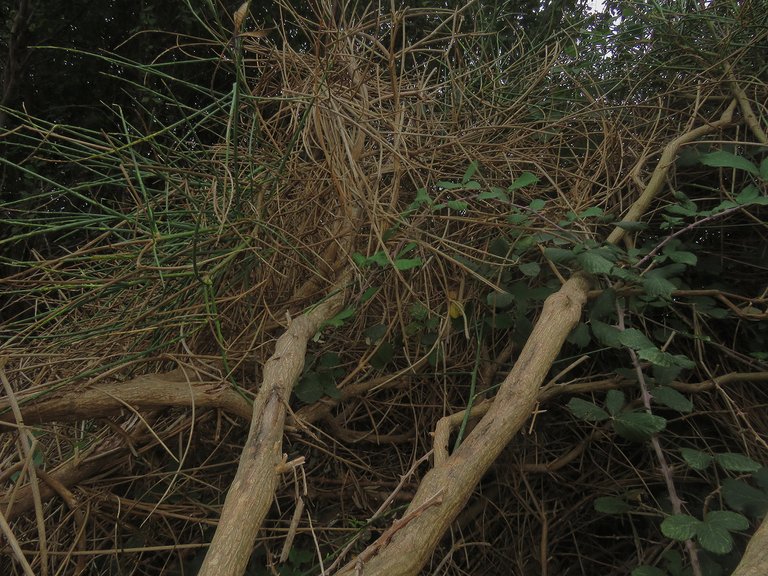
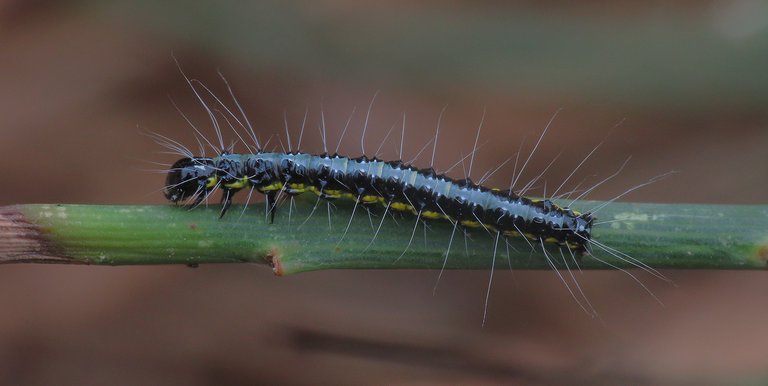
This post was shared and voted inside the discord by the curators team of Discovery-it in collaboration with Visual Shots community.
Discovery-it is also a Witness, vote for us here
Delegate to us for passive income. Check our 80% fee-back Program
Amazing macro shots as usual @borjan friend!
!discovery shots
!VSC
!PIZZA
!BBH
@jlinaresp has sent VSC to @borjan
This post was rewarded with 0.1 VSC to support your work.
Join our photography communityVisual Shots
Check here to view or trade VSC Tokens
Be part of our Curation Trail
@jlinaresp ha enviado VSC a @borjan
Éste post fue recompensado con 0.1 VSC para apoyar tu trabajo.
Únete a nuestra comunidad de fotografía Visual Shots
Consulte aquí para ver o intercambiar VSC Tokens
Se parte de nuestro Trail de Curación
Your Content Is Awesome so I just sent 1 $BBH(2/5)@borjan! (Bitcoin Backed Hive) to your account on behalf of @jlinaresp.
Discord Server.This post has been manually curated by @steemflow from Indiaunited community. Join us on our
Do you know that you can earn a passive income by delegating to @indiaunited. We share more than 100 % of the curation rewards with the delegators in the form of IUC tokens. HP delegators and IUC token holders also get upto 20% additional vote weight.
Here are some handy links for delegations: 100HP, 250HP, 500HP, 1000HP.
100% of the rewards from this comment goes to the curator for their manual curation efforts. Please encourage the curator @steemflow by upvoting this comment and support the community by voting the posts made by @indiaunited.
Wow, again, a bunch of wonderful photos that immediately immerse us in the fabulous world of nature! And these photos with the two caterpillars on the open seed pod are like some beautiful and eerie paintings that only nature can paint. ❤️🐛
I would say that over the years I see more and more new and different species of insects from the family of flies, which on the one hand worries me, on the other hand, when these flies act as a kind of pollinator after all, it is very reassuring for our future.
Don't say that because someone would take it literally as a very creepy idea lol. 😃 !LOL But it is true. Personally, I've carried a heavy camera in places that weren't meant for it at all, and I generally carry it with me whenever my outings are more than 5 kilometers by car, whenever I'm on foot, etc.
!PIZZA
I found plenty of interesting macro stuff this October. The overall atmosphere felt a bit like an imperfect copy of Spring that somehow ended up being even better than the original.
Yes, many flies work as pollinators. Some of them only occasionally, others as fully adapted nectar consumers. Many others spread the spores of fungi that look cool in photographs and also have some importance in the ecosystems. Many of those species people usually don't like, becouse of their lifestyle connected with waste, death & decomposition, are very important exactly for their part in the decomposition of organic things. All in all, if you exclude the parasitic species that carry diseases 😃 flies are mostly kinda cool. Some of them are even very colorful, and iridescent, with interesting shapes or painted wings.
I often experience moments of panic when I think that I have lost some of those essentials I always carry with me 😃 that's why I sometimes fantasize about having them as cyborg parts incorporated in me.
lolztoken.com
Because it had two banks.
Credit: reddit
$LOLZ on behalf of soulsdetour
(1/4)
Farm LOLZ tokens when you Delegate Hive or Hive Tokens.
Click to delegate: 10 - 20 - 50 - 100 HP@borjan, I sent you an
An insect extravaganza of the most epic proportions. A journey into the beauty of Nature with hairy Caterpillars and a pretty "white Butterfly" that catches my eye most of all.
Have a great day or evening Borjan !ALIVE !LUV !VSC 😊
🙂

@fun.farms has sent VSC to @borjan
This post was rewarded with 0.1 VSC to support your work.
Join our photography communityVisual Shots
Check here to view or trade VSC Tokens
Be part of our Curation Trail
@fun.farms ha enviado VSC a @borjan
Éste post fue recompensado con 0.1 VSC para apoyar tu trabajo.
Únete a nuestra comunidad de fotografía Visual Shots
Consulte aquí para ver o intercambiar VSC Tokens
Se parte de nuestro Trail de Curación
You Are Alive so I just staked 0.1 $ALIVE to your account on behalf of @ fun.farms. (8/10)@borjan!
The tip has been paid for by the We Are Alive Tribe
 through the earnings on @alive.chat, feel free to swing by our daily chat any time you want, plus you can win Hive Power (2x 50 HP) and Alive Power (2x 500 AP) delegations (4 weeks), and Ecency Points (4x 50 EP), in our chat every day.
through the earnings on @alive.chat, feel free to swing by our daily chat any time you want, plus you can win Hive Power (2x 50 HP) and Alive Power (2x 500 AP) delegations (4 weeks), and Ecency Points (4x 50 EP), in our chat every day.
Lol I love how you keep explaining what Marlera is😂
Nice shots as always😃
😂
Wow great shots, how was the butterfly able to stay still for this shot? I tried capturing a butterfly last week, it flew away immediately when it sensed my presence. Haha
They fly away from me as well, most of the times. 😀 Sometimes I just get lucky.
Okay😆
I love the macro shots and I'm glad to know the family that each insects and all come from
Thanks for sharing
I love the tone you used on the photos. The clarity is amazing too.
!LUV
Wow. I never saw these type of species with my own eyes well I love butterflies all are just lovely tiny creatures. Nice 👍
Wow! You got beautiful photos, first of all, I love that butterfly, it looks cool. And wooooo! The caterpillar is sure changing style for you to take more photos of it. Hehe! Those damn flies are so annoying😅
🙂

This is a very nice insect that my friend displays..
#hive #posh
I myself go to such beautiful places and try to take pictures in the same way, but the quality of the camera is not good, so the pictures are not so beautiful. I am also thinking of buying a camera. And then take pictures of such passing glances and share them here.
The Tylopsis lilifolia's eye is fascinating. The little predator from the genus Platypalpus looks like an alien or something.
$PIZZA slices delivered:
jlinaresp tipped borjan
(1/5) @soulsdetour tipped @borjan